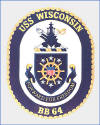Toidi
Posts: 200
Joined: 8/31/2011
Status: offline

|
quote:
ORIGINAL: heliodorus04
None of the so-called 'axis leadership advantage' is as large as would appear at a basic review (such as this) of the leadership graphics.
In fact, those graphs don't look significantly different, and I would suggest you run a regression of the model to tell me what the p-value of significance is for Soviet leadership modeled on German leadership. I would expect it is not significant at even 10 percent value, but I can't be sure till I run it myself. A cursory look shows about a .05 percentage point difference. Am I to believe German leadership is only 5% better than Soviet? At what point in the war? In 1941, should it not be greater than 5 percentage points?
The issue that lowers ALL German advantage is that Soviet has Administrative advantage throughout the game, which I have proved in this thread (pages 4 to 5).
To whit, Germany has roughly a 15 to 17 percent advantage in Admin ratings at the Corps level (compared to Soviet armies) and roughly the same when comparing Armies to Fronts. However, Germans have to spend 350% to 700% (the lower number if leadership rolls pass) more in AP to move divisions around (which does not factor in the hundreds and hundreds of divisions that the Soviet Union gets that arrive at Stavka).
It is absurd to say that the German leadership advantage in initiative and morale is as the numbers suggest when you have to factor in the Admin DISadvantage that Germany has in the war (at least until corps combat units become the majority combatants in the Soviet arsenal, but even then, divisional administrative advantages still belong to the Soviet).
Further, Germany starts the game with 5 armies over-command, further denigrating their leadership values, and unlike the Soviets (who will see their over-command burden even itself out by virtue of dead divisions that come back for free and are attached at Stavka, thus are free to reassign without AP expenditure). The punitive cost to move divisions around as Germany means that its over-command burden is far more significant a constraint than anything the Soviets face in leadership ratings.
Here you have an example of a statistician whitewashing a factual issue with facts that are divorced from their real-world context. This is deliberately misleading data analysis intended to obscure the problem I have proven exists.
Why would you 'assume' a tertiary leadership check when you can be certain that Army Group Center and Army Group South are more over-burdened than any Front the Soviets have?
1. That is why the leader in tertiary is of rating 6. I can put rating 7, this would count for quite a bit of overloading
2. The advantage is huge, as multiple checks are being made each turn, and during each battle. The Germans are only failing around half (15%) of the checks the Soviet fails (Soviet fail around 30%). That is a lot and is unchanged during the whole game. As such, the advantage is there and is *very* substantial. To shape this differently one can say:
"German leadership is 100% more efficient than Soviet, as they fail only half the amount of checks the Soviet do"
3. Germans do not have really other AP sinks than moving divisions around and creating fortified zones in late game. As such, you can easily bear with some inefficiencies until '43. At that time you get Army group A & B and you sort it out.
4. Again, with all the overloading, the third layer will maybe go from 5% to 4% advantage. That's all. Do the calculations yourself - math is simple enough.
|
 Printable Version
Printable Version













 New Messages
New Messages No New Messages
No New Messages Hot Topic w/ New Messages
Hot Topic w/ New Messages Hot Topic w/o New Messages
Hot Topic w/o New Messages Locked w/ New Messages
Locked w/ New Messages Locked w/o New Messages
Locked w/o New Messages Post New Thread
Post New Thread